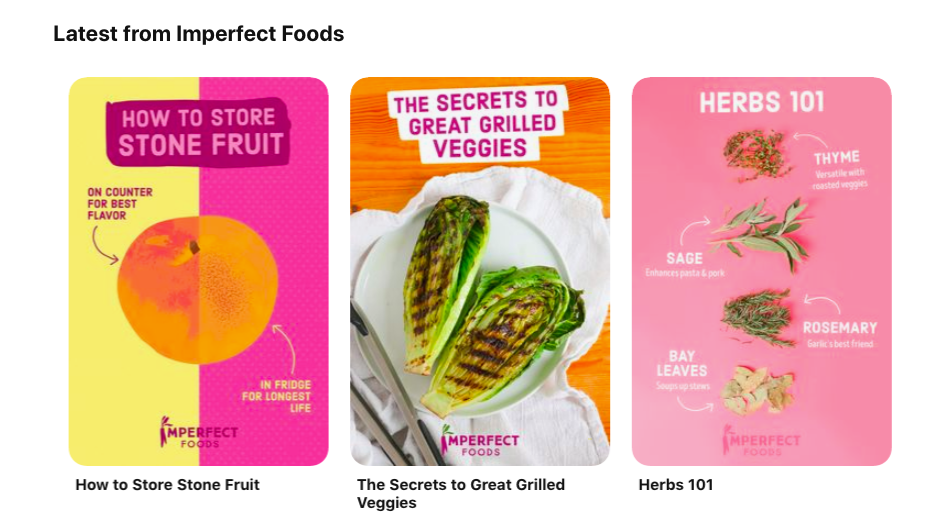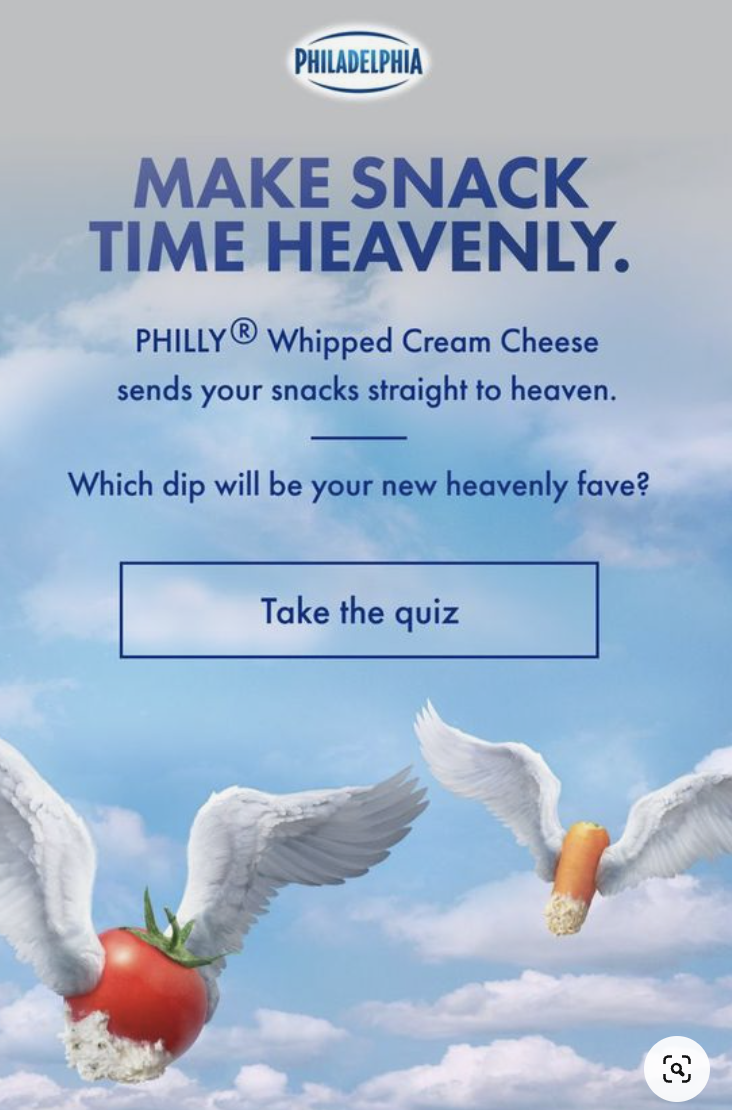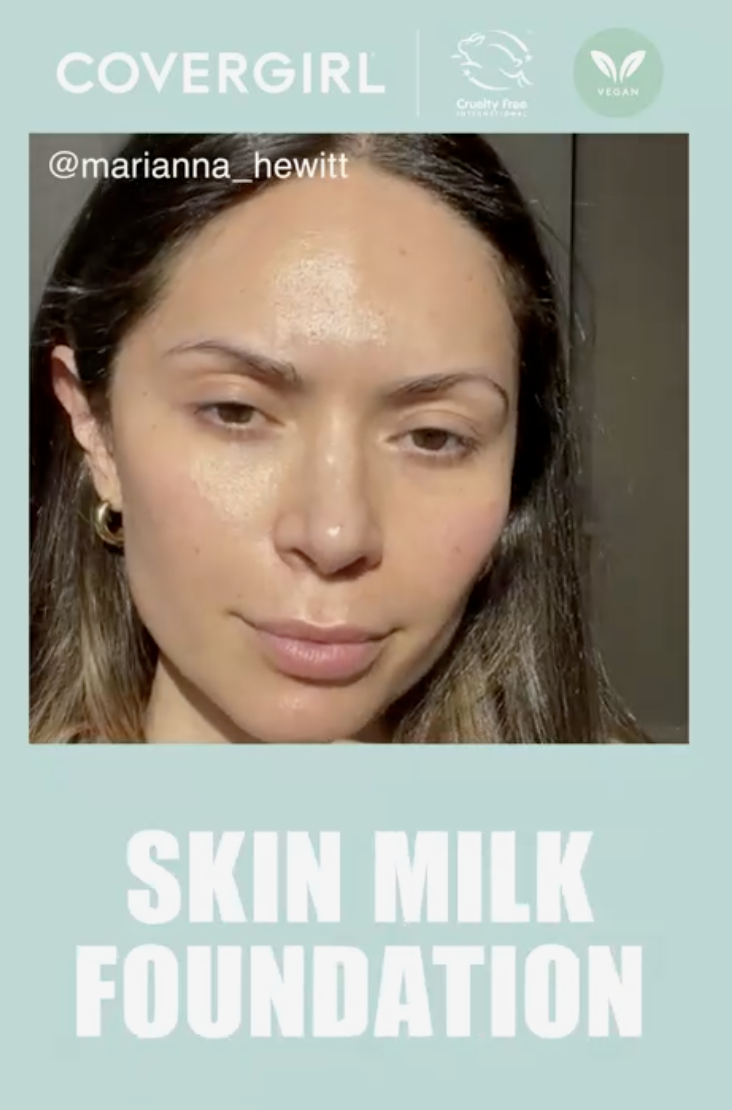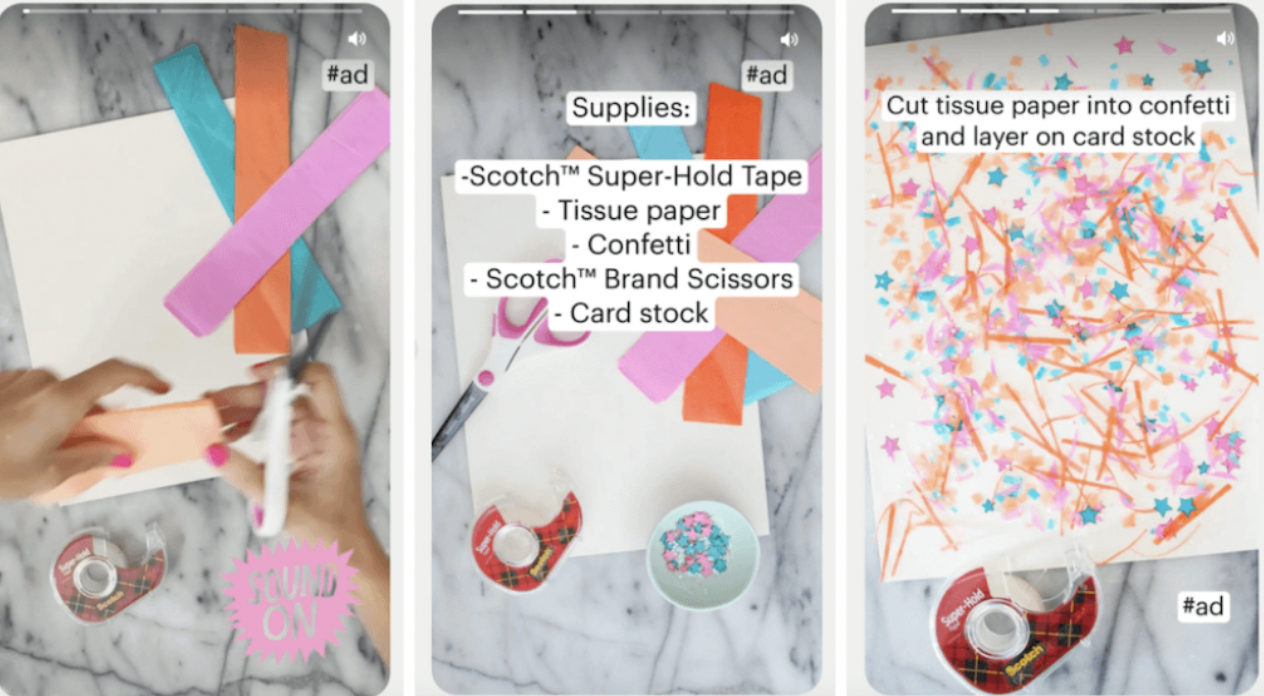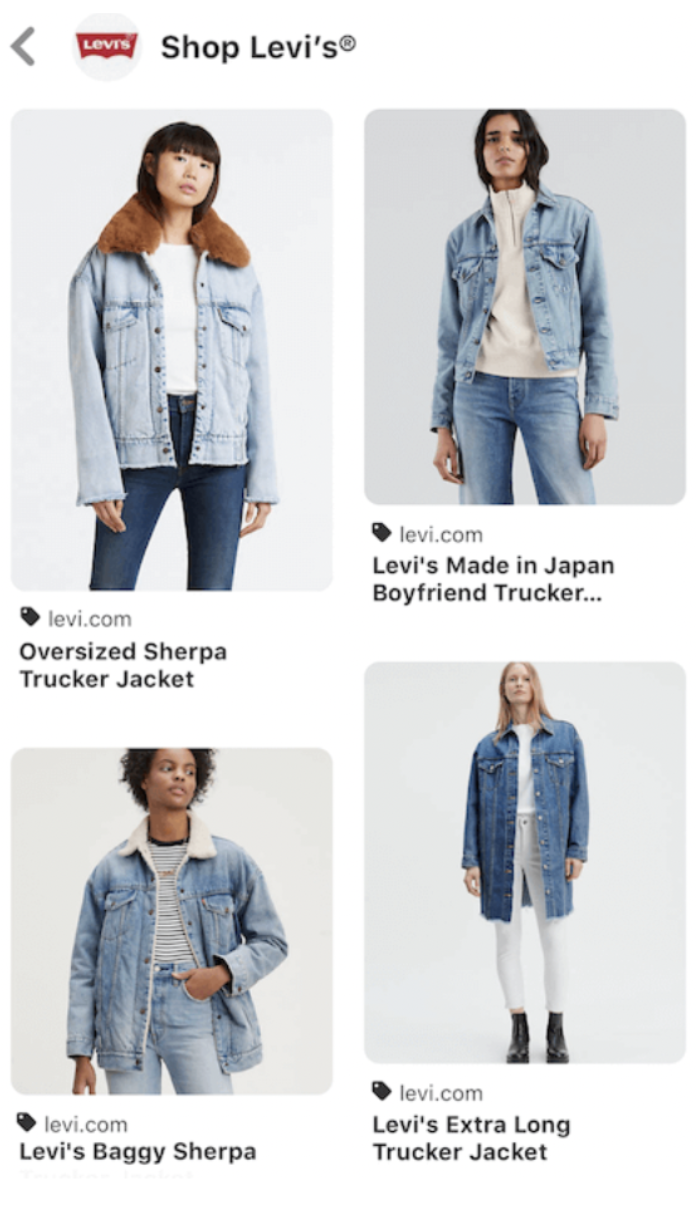Did you download the Pinterest app when you were redecorating your living room and forgot that it existed for the last three years? Many people can relate to that because Pinterest was born as an ‘inspirational’ place for infinite scrolls of fruit cake recipes, jaw-dropping pictures, colorful knitting projects, and DIY tasks to delegate to your partner.
It truly became a powerful marketing tool through its pins feature, which made Pinterest marketing an efficient strategy for growth.
First, what are the pins?
Pins are the digital, orderly mess of a busy desk: scribbled notes, recipes, newspaper clippings. You can create and add pins to boards, and you can like and comment on other people’s pins and boards. Pinterest is truly a unique social media channel, and it has evolved over the years into much more than an infinite collection of beautiful images.
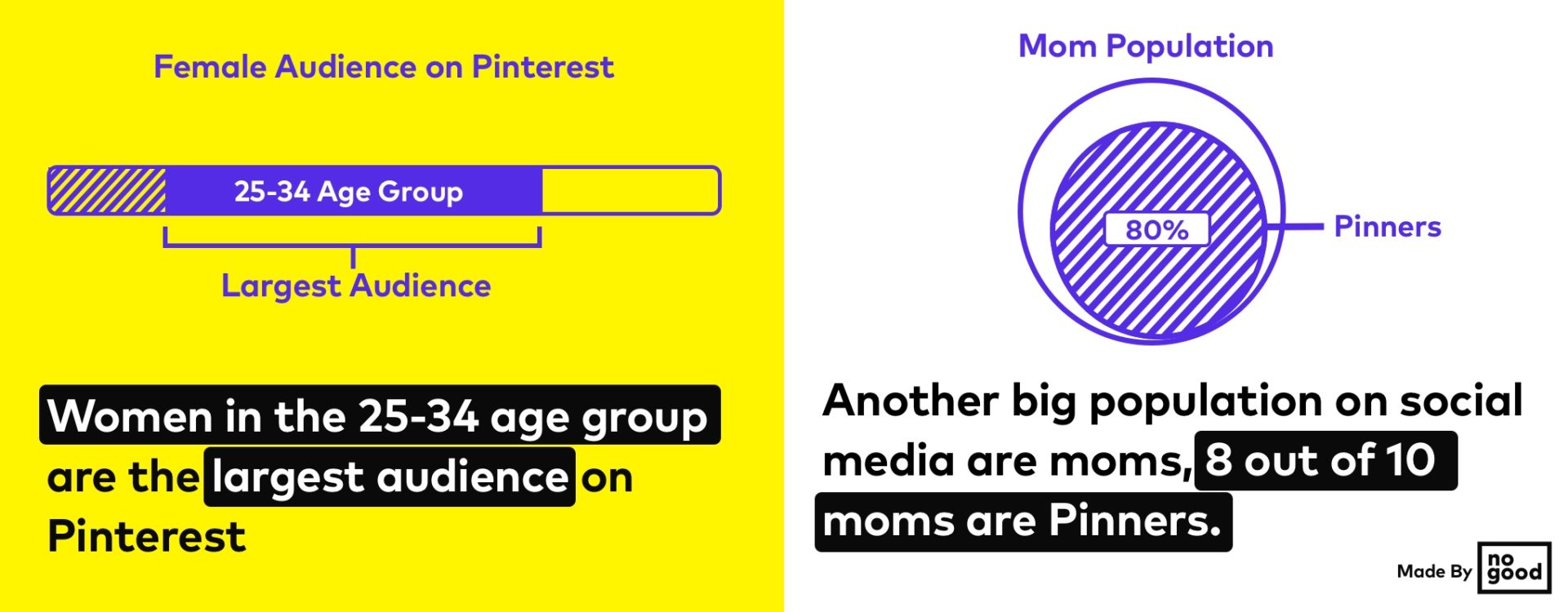
So who’s on Pinterest?
Women in the 25-34 age group are the largest audience. This is good news since women influence 70-80% of consumer spending. Another big population on social media are moms; 8 out of 10 moms are Pinners. The men’s population is around 20% of the audience, but growing.
Moreover, U.S. Millennials love Pinterest. Nearly 80% of U.S. Millennial women are on Pinterest and 40% of Millennial men, proving their loyalty to the platform. While there might not be as many young people as Snapchat or TikTok, most of the audience shows a ready-to-buy attitude. They are on Pinterest when they’re planning and making decisions.
According to Pinterest stats, 87% of Pinners have made purchase decisions because of Pinterest. 93% of Pinterest users actively use the platform for their future purchases. They are on Pinterest when they’re planning and making decisions. And that is not all. You do not have to have a big brand name to achieve success. 97% of all Pinterest searches are unbranded, so even if you are starting from scratch, Pinterest is the popular platform to start advertising on.
Pinterest is now a social network with over 450 million monthly active users and over 12 million unique worldwide. Though it’s not quite as big as the other social media giants, it still has a strong target audience base, and companies should not miss the opportunity to leverage their brand on this platform for inspiration. Since the Pandemic hit in 2020, Pinterest’s user base has expanded by 13% QoQ. Since then, the platform’s ad UI has already increasingly improved as well.
So let’s take a deeper dive into the different ways Pinterest can help your business grow in 2024.
Pinterest Evolution: Discovery to Shopping
Pinterest has a prominent discovery and inspirational component that is reflected in the neatness and beauty of the pictures shown.
You might be tricked into thinking that their target audience resembles the tireless feed-scrollers of Facebook or Instagram, but you’d be wrong: pinners are a ready-to-shop audience. In the last year, the platform has developed into a real discovery and shopping engine. Pinterest puts your brand in front of people looking for ideas and products.
The more users interact with pins, the more the platform is learning about their tastes and will send personalized suggestions based on that history. Every brand has an opportunity to sell and up-sell.
Marketing and Growth Goals
A Pinterest marketing strategy can prove beneficial for long-term results and can fit into many different stages of your acquisition funnel. When your pins become ads, you can boost brand awareness but also drive sales and increase conversions.
While some ads and videos work well for top-funnel traffic, others can help you drive conversion goals like app installs. If you would like Pinterest to showcase your products, you can also integrate your product catalog and feed into the platform. This last opportunity is obviously the one that could grow your business the most.
Here are other reasons you should consider Pinterest’s marketing strategy:
- Pinterest has a lower average CPC compared to Facebook/Instagram. The platform is not as popular among marketers, so the competition is much less fierce than other social media platforms. Remember, the social media world has much more to offer than simply Instagram and Facebook!
- The ad formats are as attractive as the ones on other platforms, if not more so.
- The keyword layering, similar to a search campaign, is an indication of strong intent.
- A campaign on Pinterest can help your SEO strategy too. With the right pins, the platform is a great ally to help your content climb to the top of the SERP. Pinterest is a ‘path to purchase,’ much more so than other media.
So, how to set up a high-level Pinterest marketing strategy? Follow these steps:
- Set SMART goals (specific, measurable, achievable, relevant, and time-bound). In addition to gaining a following on Pinterest, do you want to drive traffic to your website, increase conversions for a specific product/service, or encourage registrations for an event?
- Conduct consumer research. Learn more about the general Pinterest audience and the demographic most likely to use the channel before all. Then get to know your brand’s specific Pinterest audience.
- Conduct competitor research and analysis. Consider what your competitors are doing on this social media platform.
- Plan and integrate branded content for Pinterest into your social media content calendar.
Once you formulate a clear strategy, you can utilize organic search power and paid ads to achieve your business goals.
Organic Component
Pinterest has a social component that needs to be managed: following other pinners, repinning, commenting – after all, it is a social media account. Engagement is key! Follow the boards of your friends and competitors, “Like” and comment on others’ Pins, re-Pin (or repost) content, and share links to your website and blog post graphics in your Pins.
The difference between Pinterest boards and something like a Facebook page is that, with the right keywords, you can get a lot of ‘organic’ traffic and push leads into your funnel. A pin is a visual bookmark, and you should create them on a regular basis. You don’t want to overwhelm your target audience, but you want to stay top of mind.
Pins can be static single images or videos, they only need a description and a link, and some brands post 10-12 pins a day. Creating this type of content is only one half of the work; the other is to build a dedicated and engaged audience. Since pins don’t expire, they will always be available and researchable, and you can keep seeing results for months.
Consider Pinterest as a platform for storytelling. You’ll be rewarded if you create value, but it won’t work for a one-off campaign. Again, your first step should be creating an inspiring content board that tells the story of your brand.
Also, don’t forget to leverage the user-generated content (UGC) that speaks about your brand. You can repin it and use it in your ads too. If you are not on Pinterest today, odds are that your customers are and might well be talking about you.
Compared to other social channel platforms, visual content shared on Pinterest has a much longer shelf life. When you create a Pin, you’re unlikely to be overwhelmed with likes and comments. But over time, your Pins will be discovered via search and saved many times.
Pinterest Pins live up to 1,600 times longer than posts on Facebook or any other popular platform.
Leveraging Pinterest SEO to drive organic traffic to your pins
As one of the largest search engines on the internet, Pinterest isn’t just known as a social network for sharing recipes, decorating ideas, and DIY hacks. If your Pinterest content is not optimized for pinners’ searches, you may be missing out.
It’s important to remember that relevant keywords are building blocks for search engine optimization — and Pinterest is basically a visual content search engine, which means it has its own algorithm and its own search engine optimization rules.
You need to focus on your Pinterest SEO and implement these rules on your own profile to see your ranking increase and ensure that you reach the right potential audience.
Here are some locations in which you can insert keywords on Pinterest to improve your chances of organically ranking through search:
- Bio and profile
- Pin descriptions
- Board titles
- Board descriptions
- Image-Alt-Text
There are a few ways to research keywords on Pinterest, such as using guided search to see automatic suggestions or getting inspired by hashtags.
Here are our pro tips on how to optimize pins for organic traffic:
- Keyword Research: Pinterest is fundamentally an image search engine, so it’s crucial to carry out keyword research. Utilize Pinterest’s Search function to find related keywords that come up in auto-suggest. You can also check for keywords in descriptions of popular Pins within your category. Don’t forget to investigate keywords from your competitors’ successful Pins. Google Keyword Planner or other SEO tools like SEMRush or Ahrefs can provide additional insights.
- Keyword Usage: Now that you’ve identified your keyword list, ensure you incorporate them strategically into your Pin’s title, description, and even the file name of the image. Be careful to use them naturally to avoid keyword stuffing, which might be penalized.
- Quality Images: Pinterest is a visual platform. High-resolution, professionally curated images with vertical aspect ratios (a 2:3 ratio is recommended) are essential. Text overlays with your keyword can help emphasize your message and enhance search visibility.
- Descriptions: Pinterest uses keyword-rich descriptions to understand the context of a pin, so make sure your description is meaningful and engaging, using your keywords naturally within the text. Adding a compelling call to action can improve user engagement and click-through rates.
- Relevant Boards: Ensure you pin to boards that are relevant to your Pin’s content. A board should have a descriptive name and, if possible, incorporate your keyword in the board title and description.
- Rich Pins: These provide more context about an idea because they show extra information directly on the Pin itself. Four types of Rich Pins include app, product, recipe, and article pins. Each type has its own set of unique characteristics that add context and boost engagement.
- Analytics: Pinterest Analytics provides its own analytics platform. Use it to track your impressions, clicks, saves, and other KPIs. This helps you understand which content strategies work best and where improvements can be made.
- Long-tail Keywords: These specific phrases have less competition and can drive highly targeted traffic to your pins. They may have a lower search volume, but the traffic they generate is more likely to convert.
- Hashtags: Unlike other platforms, Pinterest uses hashtags for discovery rather than conversations. Include a few relevant hashtags in your descriptions for an additional boost.
- Social Media Promotion: Cross-promote your pins on other social media profiles. This can extend your reach and drive more traffic to your pins.
- Consistency and Fresh Content: Pinterest favors active users. Regularly create and share new pins to your social media network, ensuring they’re relevant and interesting to your potential audience.
Your Pinterest Branding
Being on Pinterest with both organic and paid pins is a great branding opportunity. The platform is a great space to showcase your brand identity and your storytelling. To differentiate yourself from others, you should tell your specific stories and be straightforward about your brand’s purpose.
As the time spent on social media increases (because of the lockdown), brands have more opportunities to get in front of their audiences. An example of great brand storytelling on Pinterest by “Imperfect Foods,” a subscription-based food box that sells fresh produce that looks ‘imperfect’ and would go to waste if not ‘rescued.’ Pinterest is a popular platform for food-related content.
Imperfect Foods took advantage of this by creating posts with facts on food waste, recipes, and even storage tips for fruits and veggies. They expanded their reach by running ads on search terms that were core to their brand and business, such as “Sustainability,” “Meal Planning,” and “Healthy Eating.”
Lastly, they leveraged Pinterest data to learn more about their audience, such as additional interests that weren’t as intuitively linked to their brand, such as “Finance,” and used these insights within future creative. According to the company’s data, Imperfect Foods was able to increase its subscriptions by 20% with Pinterest ads.
97% of Pinterest searches are unbranded. Your brand’s boards can help reach new Pinners interested in specific topics or learning specific things. For example – Oreo’s boards: they include Pins with inspiration for upcoming seasonal holidays as well as recipe ideas. In other words, the brand skillfully mixes useful, engaging, and inspiring content boards with more promotional boards.
Last but not least, be consistent! Pinning on a daily basis is more effective than creating a popular board and filling it all in one go. Pinning regularly will increase the reach of your content.
Targeting Opportunities
What’s unique about Pinterest is its mix of search campaigns and social media features. We can call it a “search-social platform,” which means endless campaign opportunities!
Besides the ‘classic’ demographic targeting (geography, gender, age, etc), you can segment your Pinterest audiences by a list of customers who visited your site, an ad-hoc list of customers you upload, an audience that has engaged with your pins already, or an act-like audience that behaves similarly to the one you already have (similar Facebook’s lookalike audience).
Even the interests you can target are plenty, including entertainment, DIY, education, finance, and more. The actual list can be found here for your nerdy browsing pleasure.
Leveraging Keyword Search For Paid Ads
In addition to the above-mentioned targeting capabilities, Pinterest ads allow you to create a campaign on your specific keyword list.
Being a visual search engine requires you to be smart with your keywords, so make sure you do thorough research on the keywords you want to use and make sure they appear in the titles and descriptions of your pins and wider boards.
(Tip: Write keyword-rich descriptions and boards, and also add a link to your pin descriptions). Use keywords the smart way, do not over-stuff your placements and don’t corrupt the message that is part of your storytelling.
This is one of the key features of Pinterest Ads: on top of all the demographic and interest layers, you can target users who have specifically searched for something you sell. Since Pinterest is a type of search engine similar to Google and Bing ads, it will show your ads based on the search terms and keywords people are typing in.
The keyword layering exists in combination with other types of targeting or on its own. We recommend that you don’t try too many features at once since you won’t be able to isolate them, control the results, and tell what is working and what isn’t. You can use at least twenty-five keywords, from broad phrases to negative matches.
For the biggest impact and ROI, you must choose your audience carefully. Like every other search engine, you want to be relevant and answer the questions that have been asked. Another big opportunity on Pinterest is clear from the following statistic; 97% of all searches on Pinterest are unbranded, which means that Pinners are open to discovering new products and ideas.
Use the Pinterest Trends Tool
Pinterest has launched the Pinterest Trends tool — it’s a great place to see the top keywords for different searches and get inspired for your content. Similar to Google Trends, it is an amazing lever you can pull to get to know what kind of topics your potential audience would be interested in.
Use it to search for different terms and see how many people are searching for that term at different times of the year, compare the popularity of terms, and see what’s hot on Pinterest right now. Use this tool to update your keyword list and find new keywords to keep you at the top of search queries!
Another great pin type is blog post graphics that promote the articles you publish on your website. Make sure these are well-designed vertical graphics that will stand out in someone’s feed.
Leverage Pinterest Analytics to Support Strategic Decision-Making
Pinterest Analytics is one of the latest and greatest features of a Pinterest for Business account. It is a powerful tool that allows you to keep track of your spending and Pinterest marketing strategies.
With its help, you can measure the metrics such as total impressions, clicks, conversions, different conversion events, and sales data. After verifying your account, you can get access to important tracking information, and you will be able to see what strategies and content are working so you can constantly improve your marketing.
Ad Formats
Pinterest offers ads for every goal. This includes a standard pin, video pin, app install, shopping pin, carousel, rich pins, etc. They can be used in conjunction with your goals and the products you sell. Carousels showcase more images and are particularly helpful when you need to ‘zoom in’ on your product, while video creates a bigger engagement and works well in the ‘discovery’ phase.
The inspiration, better, the “Pinspiration,” is endless.
Among the latest ad formats, Pinterest recently launched the “Shop the Look Pins” that links to the product page where you can buy the item. These pins do very well on apparel and fashion categories as they have white dots highlighting different parts of the look, and tapping on them will send you straight to the item page.
This feature is currently available to all business accounts in the US, and specific business accounts in Australia, Brazil, Canada, France, Germany, Ireland, Japan, Mexico, New Zealand, and the UK.
Here’s how ‘Shop the Look pin’ appears:
Rich pins are a free Pinterest feature intended to add greater detail and information on the pins themselves. Think of them as Twitter Cards or the Facebook open graph. They’re designed to make the pinning experience better for pinners and more beneficial for those being pinned.
There are five types of rich pins:
- Article pins include the headline, author, story description and link
- Product pins include real-time pricing, availability and where to buy
- Recipe pins include ingredients, cooking times and serving info
- Movie pins include ratings, cast members and reviews
- Place pins include an address, phone number and map
Rich pins appear for validated sites. Validation does not happen automatically. You can apply to add rich pins from your own website after checking to see that all the right code is in place
Top Ad Examples
Static Ads: By creating a static image pin that linked to a quiz, Philadelphia was able to collect user data and offer up personalized product recommendations.
Video Ads: Here, Covergirl’s video pin effectively communicates its core value propositions to users:
- It’s vegan and cruelty-free, as the info overlay explains;
- How to use the product, with the closeup video demo;
- That influencers like it, thanks to the tagged influencer — Summer Fridays co-founder Marianna Hewitt, who has 1 million Instagram followers.
Carousel Ads: This Scotch tape carousel ad on Pinterest Influencer, Kailo Chic’s page, is a sponsored post showing a step-by-step bookmark-making tutorial. The sponsored content shows a use case for Scotch Tape, but also feels native to the platform.
Shopping & Collection Ads: Since Pinterest only lets you build collections ads if you’ve already made organic, shoppable pins for the items in your product catalog, you must first apply to create rich pins. Then, send a feed file to Pinterest through Shopify or another eCommerce platform, and Pinterest will automatically generate pins.
To view more Pinterest ads for inspiration, we have found an account called Pin4Ever that has created a pin board with a collection of Pinterest’s Promoted Pins and Buyable Pins (Pinterest paid ads).
Conclusion
More than 300 million people use Pinterest every month to find new ideas and new products. 89% of people on Pinterest use it for purchase inspiration. 90% of weekly pinners make purchase decisions on Pinterest. Pinners are known to plan early and spend more.
It’s important to understand Pinterest is a visual platform. Your visual assets (static images or videos) have to be top quality, impeccably neat, and incredibly awe-spiring. It is best to keep the imagery simple to make an impact. With 80% of Pinterest users using mobile devices, you want to make your pins stand out with high-resolution and vertical images.
Pinterest marketing carries a big emotional component, and it’s recommended for brands that are ready to do some storytelling. When you create a board on Pinterest, your goal is not just to show your product but to tell a story and communicate your brand values.
More than that, 98% of pinners have tried things they find on Pinterest, and 83% have made purchases based on-brand content. Storytelling on Pinterest is fundamental because it conveys emotions and creates empathy. And emotions and empathy will help you sell. If your brand can reach them early, you can easily bring them into your sales funnel.

